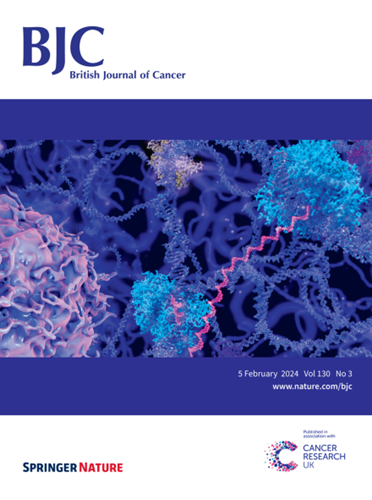Heterogeneity of tertiary lymphoid structures predicts the response to neoadjuvant therapy and immune microenvironment characteristics in triple-negative breast cancer
IF 6.4
1区 医学
Q1 ONCOLOGY
引用次数: 0
Abstract
Tertiary lymphoid structures (TLSs) impact cancer outcomes, including in triple-negative breast cancer (TNBC), where their role in immune modulation during neoadjuvant therapy (NAT) is underexplored. This study employed single-cell RNA sequencing (scRNA-seq), multiplex immunofluorescence (mIF) staining, and radiomic techniques to evaluate TLSs and the tumour microenvironment (TME) in TNBC patient samples before and after NAT. The presence of TLSs in TNBC was associated with B-cell maturation and T-cell activation. Compared with TLS-low TNBC, TLS-high TNBC showed significantly greater expression of immunoglobulin family genes (IGHM and IGHG1) in B cells and greater cytotoxicity of neoantigen-specific CD8 + T cells (neoTCR8). Additionally, mIF revealed notable differences between TLSs and the TME in TNBC. Although CD8 + T-cell levels do not predict the NAT response effectively, TLS maturity strongly correlated with better NAT outcomes and prognosis (P < 0.05). An imaging biomarker scoring system was also developed to predict TLS status and NAT efficacy. Our results demonstrated changes in TLSs and the TME in TNBC patients post-NAT. These findings confirm the predictive value of mature TLSs (mTLSs) and support the use of personalised immunotherapy based on post-NAT immune characteristics, thereby improving clinical outcomes.

三级淋巴结构的异质性预测了三阴性乳腺癌对新辅助治疗的反应和免疫微环境特征。
背景:三级淋巴样结构(TLSs)影响癌症结局,包括三阴性乳腺癌(TNBC),其中它们在新辅助治疗(NAT)期间免疫调节中的作用尚未得到充分研究。方法:采用单细胞RNA测序(scRNA-seq)、多重免疫荧光(mIF)染色和放射组学技术对TNBC患者标本在nat前后的TLSs和肿瘤微环境(TME)进行了评价。结果:TNBC中TLSs的存在与b细胞成熟和t细胞活化有关。与tls -低TNBC相比,tls -高TNBC在B细胞中免疫球蛋白家族基因(IGHM和IGHG1)的表达显著增加,新抗原特异性CD8 + T细胞(neoTCR8)的细胞毒性更大。此外,mIF显示TNBC中TLSs和TME之间存在显著差异。虽然CD8 + t细胞水平不能有效预测NAT应答,但TLS成熟度与NAT预后和预后密切相关(P结论:我们的研究结果表明TNBC患者在NAT后TLS和TME发生了变化。这些发现证实了成熟TLSs (mTLSs)的预测价值,并支持基于nat后免疫特征的个性化免疫治疗的使用,从而改善临床结果。
本文章由计算机程序翻译,如有差异,请以英文原文为准。
求助全文
约1分钟内获得全文
求助全文
来源期刊

British Journal of Cancer
医学-肿瘤学
CiteScore
15.10
自引率
1.10%
发文量
383
审稿时长
6 months
期刊介绍:
The British Journal of Cancer is one of the most-cited general cancer journals, publishing significant advances in translational and clinical cancer research.It also publishes high-quality reviews and thought-provoking comment on all aspects of cancer prevention,diagnosis and treatment.
 求助内容:
求助内容: 应助结果提醒方式:
应助结果提醒方式:


